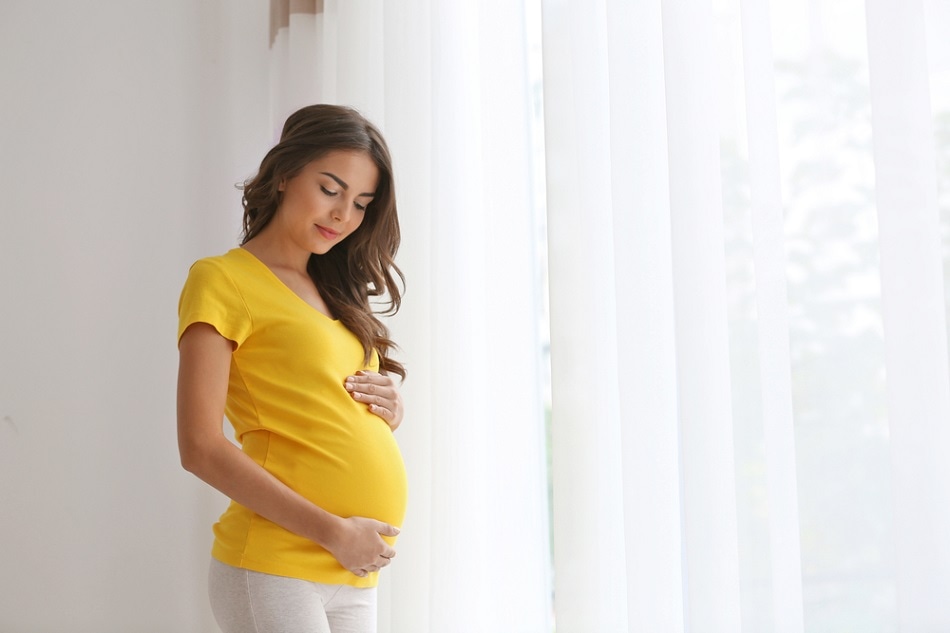Nov 26 2019
Placentas have the ability to offer key details about the health of the baby and mother. However, only 20% of placentas are evaluated by pathology examinations post-delivery in the United States. The time, cost, and expertise required to test them are very high.

Image Credit: Africa Studio/Shutterstock.com
Currently, scientists have come up with a new solution that could generate precise, automated, and near-immediate placental diagnostic reports by means of computerized photographic image analysis.
Their study could enable all placentas to be tested, form a less resource-intensive path to analysis for research, and decrease the number of normal placentas sent for full pathological examination—all these may positively benefit health outcomes for both babies and mothers.
The placenta drives everything to do with the pregnancy for the mom and baby, but we’re missing placental data on 95 percent of births globally. Creating a more efficient process that requires fewer resources will allow us to gather more comprehensive data to examine how placentas are linked to maternal and fetal health outcomes, and it will help us to examine placentas without special equipment and in minutes rather than days.
Alison Gernand, Assistant Professor of Nutritional Sciences, College of Health and Human Development, Penn State
This work was presented at the International Federation of Placenta Associations meeting held in Buenos Aires, Argentina, in September and at the International Conference on Medical Image Computing and Computer Assisted Intervention held in Shenzen, China, in October.
The patent-pending technique involves using artificial intelligence to examine an image of all sides of the placenta following delivery, and later generating a report with important data that could affect the clinical care of the child and mother, for example, whether the fetus was receiving enough oxygen in the womb or whether there is a risk of bleeding or infection.
At present, there are no evidence-based standards to find when a placenta ought to be analyzed. Low-income countries and places where home births are more common often have insufficient resources to carry out even a baseline placental analysis. This digital device could provide a solution, as an individual would require only a tablet or smartphone with the apt software.
Even in very low-resource areas, someone typically has a smartphone. Our goal is for a medical professional or trained birth attendant to take a photo which, after analysis through licensed software, could provide immediate information that aids in the care of the mother and baby.
Alison Gernand, Assistant Professor of Nutritional Sciences, College of Health and Human Development, Penn State
For instance, an umbilical cord having excessive twisting or an abnormal insertion point can serve as a predictor of neonatal stroke. Analysis following a stillbirth could offer family details about whether stillbirths may take place in future and enable medical professionals to advise the family members on possible interventions.
The scientists developed the system by analyzing 13,000 high-quality placenta images and their respective pathology reports from Northwestern Memorial Hospital. Later, they labeled a training set of images with data points key to understanding the placenta, for example, the umbilical cord insertion point and areas of incompleteness.
The images helped train neural networks using GPU and CPU servers that could assess new placental images automatically to identify features connected to potential health risks and abnormalities. Their system efficiently generated predictions on unlabeled images. Comparisons with the original pathology reports revealed the clinical potential and high accuracy of the system.
Past analyses have typically examined features independently and used a limited number of images. Our tool leverages artificial intelligence and a large and comprehensive dataset to make multiple decisions at the same time by treating the different parts of the placenta as complimentary. To our knowledge, this is the first system for comprehensive, automated placental analysis.
James Wang, Professor, College of Information Sciences and Technology, Penn State
Moreover, this tool could further enhance pregnancy research and be useful for long-term care by offering clinically relevant data to practitioners and patients.
Wang stated, “We don’t want to replace pathologists, but rather we want to provide physicians with more information right at birth so they can make an efficient and informed decision about how to care for the mother and child.”
“We’re working to make the placental data accessible by translating it into something that’s both clinician and patient friendly,” Gernand summarized. “We know placental development and function is vital to the health of the pregnancy, but we only know a fraction of how much it can tell us about the health of the mom and baby. This research is a critical first step in building big data to better understand what we can learn from the placenta.”
Gernand and Wang collaborated with Jeffery Goldstein, assistant professor of pathology at Northwestern University Feinberg School of Medicine, and Penn State College of IST doctoral students Yukun Chen, Chenyan Wu, and Zhuomin Zhang.
The wider team of researchers included Tony Parks, professor of pathology at the University of Toronto; College of IST doctoral student Dolzodmaa Davaasuren; and doctoral student Celeste Beck, research technologist Leigh Taylor, and posdoctoral fellow Kelly Gallagher from Penn State’s Department of Nutritional Sciences.
This study was funded by the Bill & Melinda Gates Foundation.